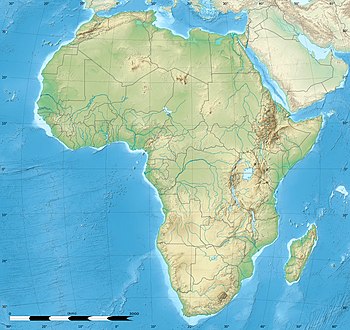Sangha Trinational
Sangha Trinational (French: Trinational de la Sangha, TNS) is a forest divided between the nations of Central African Republic, Cameroon and Congo-Brazzaville. It was added as a UNESCO World Heritage Site in 2012 because of its outstanding biodiversity and unique biological communities.[1][2] The site includes 3 contiguous national parks within the humid tropical forests of Central Africa: Nouabalé-Ndoki National Park in Congo, Lobéké National Park in Cameroon, and Dzanga-Ndoki National Park in Central African Republic. The large size of the site and the relatively limited amount of deforestation within the three parks has allowed populations of vulnerable species such as African forest elephants, gorillas, sitatunga, and chimpanzees to thrive.[1] In addition, populations of critically endangered plant species such as Mukulungu are protected within the site's borders.

| UNESCO World Heritage Site | |
|---|---|
 Map of the World Heritage Site and buffer zone | |
| Includes | |
| Criteria | Natural: (ix), (x) |
| Reference | 1380rev |
| Inscription | 2012 (36th Session) |
| Area | 7,463.09 km2 (1,844,170 acres) |
| Buffer zone | 17,879.5 km2 (4,418,121 acres) |
| Coordinates | 2°36′34″N 16°33′15″E |
 Location of Sangha Trinational in Africa | |
References
- "Sangha Trinational". UNESCO. Retrieved 2 September 2012.
- Gerken, James (9 July 2012). "Sangha Tri-National Protected Area Declared A World Heritage Site". HuffPost. Retrieved 3 September 2012.